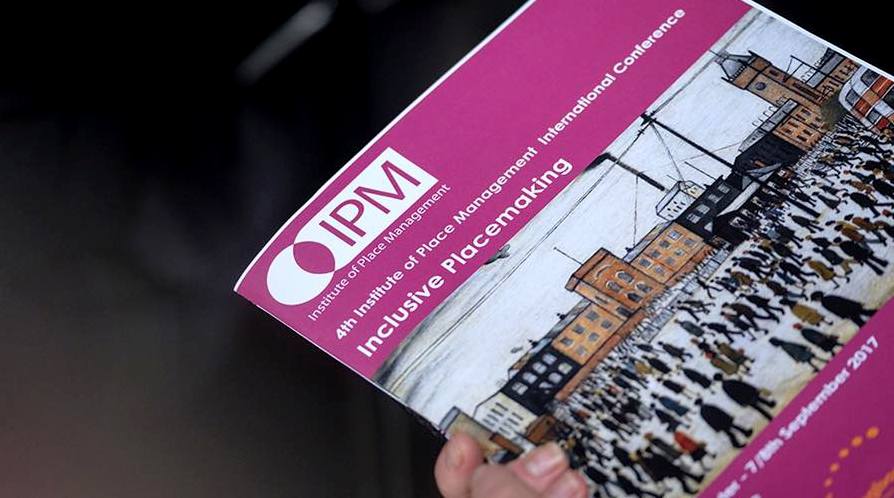Aleks Vladimirov in this guest post shares his thoughts and reflections on the recent conference by the Institute of Place Management in Manchester, United Kingdom. He highlights how place branding, place management and placemaking contribute to shaping cities, regions and destinations.
The 4th Institute of Place Management Conference in Manchester this September had a focus on inclusive placemaking. In multiple streams of lectures, academic and practitioner members of the Institute showcased examples of how placemaking can influence places.
A specific part of the conference was devoted to how place branding can direct placemaking and management activities, and vice versa, which I thought might be of interest to readers of The Place Brand Observer. Below my key takeaways from this specific sub-stream of presentations on place branding, and how I will apply them into my everyday practice.
Tourism, place and the market: authenticity as value creation
O’Malley, Lichrou and Patterson presented research findings on how bottom-up, participative approaches to place branding enhance authenticity, stakeholder identification and commitment. The paper was founded in the tradition of Service-Dominant Logic of Marketing, which looks at how different actors co-create place brands in experience networks, rather than in top-down hierarchies. The presentation and discussions focused on how such a perspective bridges the distinction between stakeholders as having conflicting needs (residents, visitors, local government, business).
The key argument here was that bringing together all these stakeholders/actors around a place brand identity (or common ground regarding what their place is about) can create truly authentic place brand stories, campaigns and value propositions (see also Vargo and Lusch, 2004; 2008).
A particularly important discussion centred around evident attempts at “staged authenticity”, which can never be accepted by residents, as it clearly serves only a visitor community. Instead, it was suggested to think about places as experience spaces, where people can co-create their meaning and feel a strong sense of authenticity.
For place brand managers like myself this means that we should think about how we can facilitate this process for all actors, rather than commodifying our places by means of simple slogans and logos.
Extraordinary, everyday Barossa Valley: place marketing for local communities
On the topic of slogans and logos, there was a presentation by Chris Sands and Craig Grocke on how building a place brand around a concept and slogan could be made to not-commodify a place and inspire great creative visualisation.
The argument: Barossa Valley in Australia is known for its wine but what residents experience in their daily lives is quite extraordinary, despite their unawareness of that. This was captured in a concept called “someone’s everyday is someone else’s extraordinary”. This simple and yet transformative idea was developed by Chris Sand of “Totally Locally” into visual podcasts and imagery that captured the lives of artisan traders of the area.
Personally, what I found interesting was the low-cost way in which this was done. He used a phone for the interviews and a camera for video and photos. Such a cheap but effective way of engaging with the stories of those that make a place can not only be a great marketing campaign, but also a great way of crystallising what the place brand really stands for. This concentrated story can then cut through multiple communication channels.
The link between place branding and city prosperity
On the topic of crystallising what place brands stand for, another talk was quite interesting which looked at the measurement of place brand equity. This was a talk by Chris Fair from Resonance Consultancy, who explained the components that build-up the 6 sub-areas measured for place brand equity by their research team (Place, Programming, Prosperity, Product, People and Promotion). What I found quite interesting was how Resonance structured its ranking, which made the complex world of place branding look very organised and rigid.
I asked Chris during one of the conference breaks about the methodology of the ranking, and in particular the audience whose perceptions they had researched. He said that this choice to focus on millennials who travel was made because this is what his clients are interested in.
While I challenged him on this being a broad segment, I found that the discussion about whether places should segment and prioritise spending accordingly – like commercial brands – enriching. I left thinking that, from a resource efficiency stand-point, of course places need to prioritise which segments to try and attract. However, how to communicate and justify such segmentation to residents who may not fit those segmentation criteria and therefore might feel that they are not represented and their needs are not met?
My impression after this discussion at the conference has been that limiting place branding activities to demographic segments can be problematic. On the other hand, a focus on the attitudes of the people most likely to visit a place or move there could lead to a discussion of shared identity that they can experience in a place.
How inclusive, participatory marketing can shape places
On the topic of whether market segmentation is a sound approach to place brand management, another talk by Nick Jones and Ru Kotecha focused on how inclusive, participatory marketing can shape places. Interesting in their talk was the focus they had picked – real estate and regeneration places.
Essentially, they advocated for a workshop approach to deciding on how to promote these developments. These facilitated workshops, they suggested, can uncover very sensitive community concerns which – when not accounted for in place branding messages – can lead to problems with creating a critical mass of people wanting to move into these developments.
An interesting quote from William H. Whyte, cited in their paper: “What attracts people most, it would appear, is other people”. In practical terms, the authors suggest to organise events and projects such as outdoor cinemas during development, so people can see and experience the development.
 Aleks Vladimirov is the Partnerships Manager at Shrewsbury Business Improvement District and a PhD researcher at the institute of Place Management, Manchester Metropolitan University, UK. Connect with him on LinkedIn.
Aleks Vladimirov is the Partnerships Manager at Shrewsbury Business Improvement District and a PhD researcher at the institute of Place Management, Manchester Metropolitan University, UK. Connect with him on LinkedIn.
Enjoyed this reflection on the 2017 Institute of Place Management conference in Manchester, UK? Spread the word!


